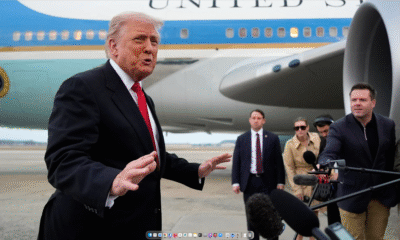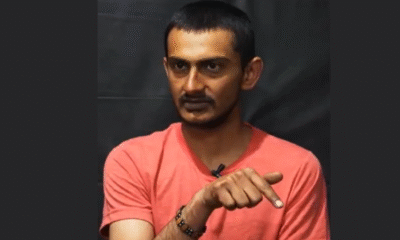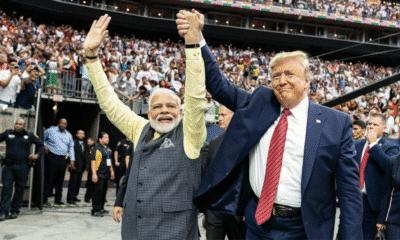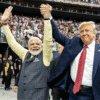Startup & Entrepreneurship
Will Raghuram Rajan's exit affect the startup ecosystem of India?
Prime Minister Narendra Modi recently called Raghuram Rajan a “patriot” in an interview with Times Now setting to rest a few speculations as well as raising a few questions, primarily on his silence over the long drawn clash between his party hardliners and the RBI chief.
Raghuram Rajan announced his decision to step down as Reserve Bank of India Governor in September this year and will not seek an extension after completing his three year stint. This decision would make Rajan the only RBI governor since the 90s to serve for only 3 years. The decision seems to come in the wake of mounting differences between the RBI chief and BJP’s conservative right wingers who have increasingly criticized Rajan’s financial decisions.
Differences between Rajan’s economic decisions and BJP hardliners was palpable two years ago when the RBI chief rooted for higher interest rates when the BJP was trying hard to sell itself as a party promising economic growth and employment at a time when the annual GDP growth was below 5 per cent around the 2013-2014 financial years. It was also marketing itself on the ground of relaxing restrictions to facilitate more foreign investments. Rajan’s vocal resistance to the interference of the government in economic and monetary policies have led to some personal attacks from BJP party members. Additionally the decision to increase interest rates sat at odds with BJP’s marketed image as a party that would bring about economic relief with Subramanium Swamy going so far as to claim that the higher rates had brought about the “collapse of industry and rise of unemployment in the economy.”
However, statistics suggest otherwise. According to independent analyst and CNBC columnist Michael Ivanovitch, “When Rajan took the helm in September 2013, the economy was declining at an annualized rate of 2 percent on quarter, consumer prices were soaring 9.8 percent, the rupee was down 16.6 percent from the year earlier, and the current account deficit was estimated at 4 percent of GDP.” On the event of his departure, Rajan would have left India with an economy that is “growing at a rate of 9.6 percent, inflation is down to 5.8 percent, the rupee lost only 4.7 percent from its year-earlier level, and the estimated current account deficit is about 1 percent of GDP.”
While Rajan’s success as a central banker has been lauded throughout the world the question that remains is- will the reforms that were initiated under Rajan be able to sustain after his exit? Several experts have tried to assess the scenario as it is, however, the fact that there is growing skepticism among foreign investors towards India as a fertile economic investment due to several structural challenges cannot be denied. In this scenario Raghuram Rajan’s exit can only spell trouble for the Indian economy where foreign investments are concerned. Perhaps it was this that led Prime Minister Narendra Modi to promptly announce relaxed foreign investment limits in industries ranging from retail, broadcast, aviation to pharmaceuticals. While the potential of the Indian market cannot be denied the structural challenges are a key issue that are yet to be addressed.
Raghuram Rajan and the Startup Economy of India
Prime Minister Narendra Modi’s fund to help the startup ecosystem by encouraging businesses and offering tax breaks was powered by moves made by the Reserve Bank of India early this year. The RBI made some economic decisions to lure investors to the startup economy, one of the principal ones being allowing overseas investors to sell their stakes in Indian startups to local companies, thus giving them an easier exit route for foreign venture capital funds.
In India, rules entailed that several limitations were placed on foreign shareholders on their stakes in Indian companies. This leads to several restrictions that created an atmosphere of discomfort for foreign investors. By giving investors an exit strategy Rajan relaxed the market for foreign investors. Additionally the RBI also allowed startups to file reports over the Internet, and eased rules governing share transfer transactions.
Raghuram Rajan throughout his stint, has expressed support for the startup economy and acknowledged the role of startups and small businesses in generating employment. The RBI governor has stressed on issuing master circulars aggregating scattered rules, and removing old regulations which have become redundant but still in the statute. He has also constantly stressed on startups and small businesses being allowed the opportunity to cut losses and close shop if the business is not profitable, thus exiting with whatever profit the business can muster; a key debacle in the startup scenario.
Rajan has also underlined the key areas that should be focused on by planners and the government, namely “provision of easy entry and easy exit, smooth availability of finance, access to input and output market, protection from creditable taxes and healthy competition in the sector”, a sentiment that is shared by several startups and investors.
With his exit, repercussions on the startup economy will be very likely decided solely by government policies. While the government is open and encouraging about the startup ecosystem whether or not they can focus on the key challenges remains to be seen. While Rajan had a clarity on the situation regarding the structural challenges as well as several external market mechanisms at play when it comes to startups and small businesses, whether or not his successor will acknowledge the same and work on them, only time will tell.








































